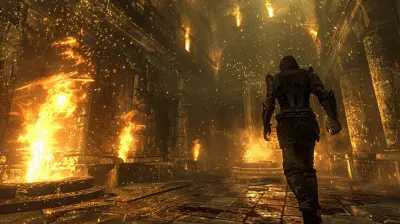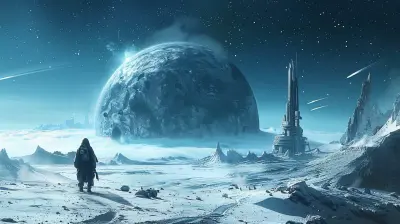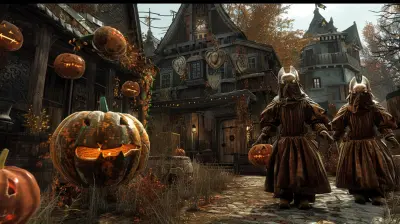Designing a World Map that Enhances Gameplay
23 April 2025
Imagine stepping into a game where every nook and cranny of the world invites you to explore, tells a story, and challenges your instincts. That’s the magic of a well-designed world map. Whether you’re navigating an alien planet, exploring a mythical kingdom, or traversing post-apocalyptic ruins, the map is the silent guide that shapes your journey. But designing these maps isn’t just about throwing some locations onto a canvas—oh no, it’s way more intricate than that. Let’s dive into the art (and science) of designing a world map that enhances gameplay and keeps players coming back for more.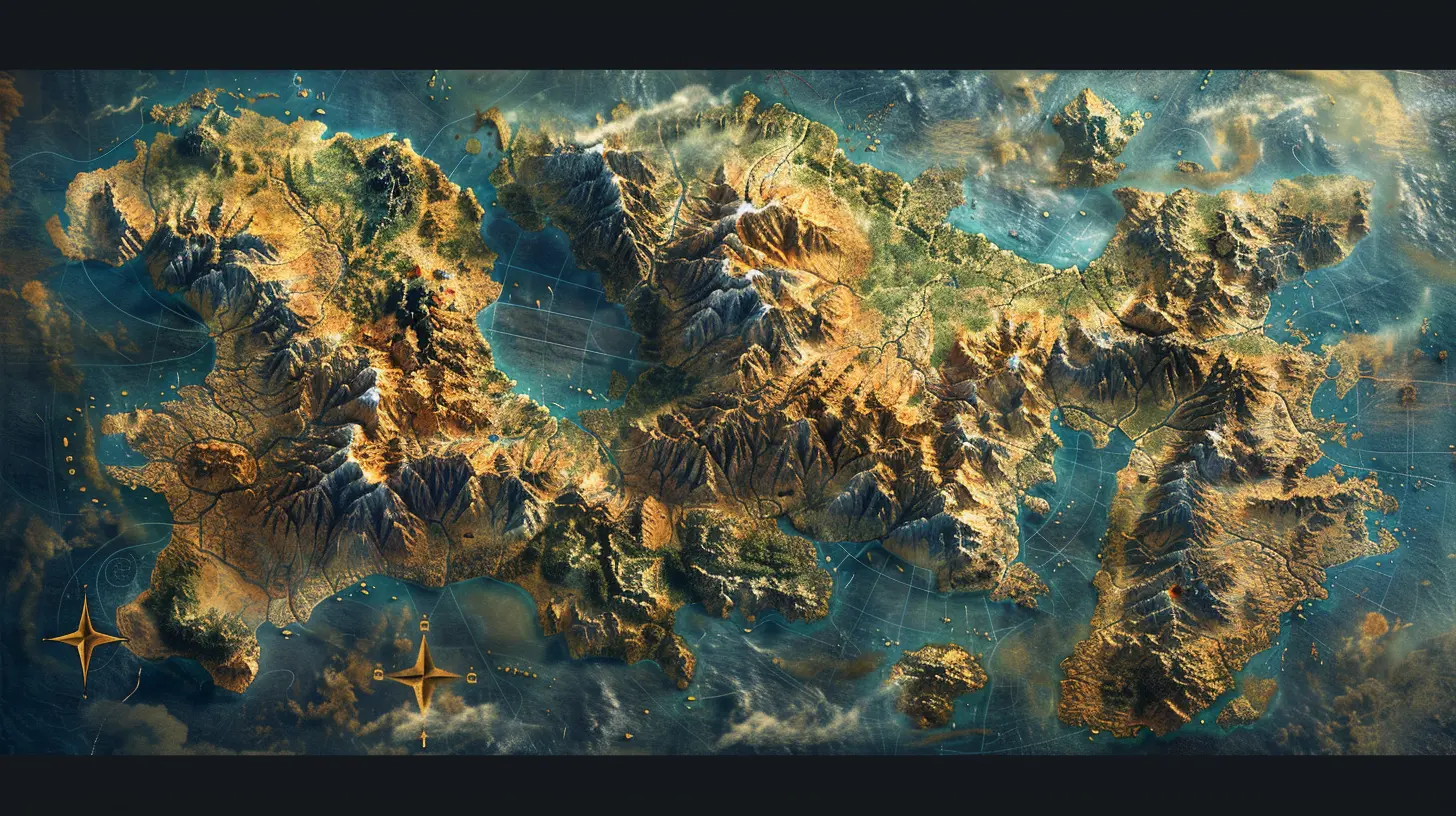
Why the World Map is the Unsung Hero of Game Design
Before we geek out on "how," let’s take a second to appreciate the "why." A world map isn't just there to look pretty or to fill in the space between quests. It serves a much bigger purpose. It sets the tone of the game, enriches storytelling, and even influences the way players interact with the gameplay mechanics.Ever played a game where the map felt… well, lifeless? Like, you’re traveling from Point A to Point B, but there’s no excitement, no curiosity, no reason to veer off the beaten path? That’s what happens when the map is designed as an afterthought. A well-designed map is the beating heart of the game, a sandbox where creativity and enjoyment collide.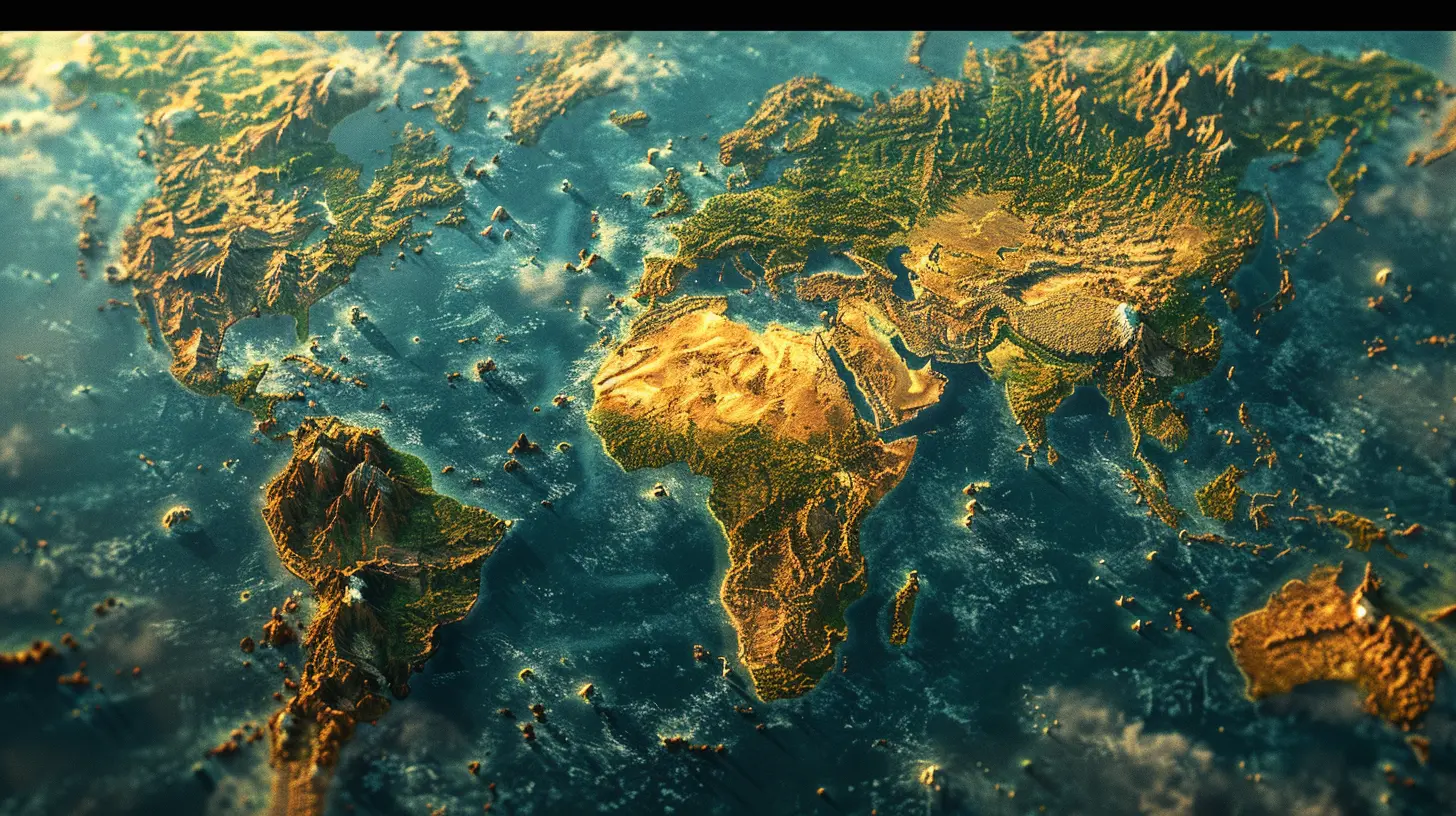
Step 1: Understand the Core Gameplay
Let’s start with the basics: What is your game all about?Your map needs to complement your gameplay. Is your game about exploration, survival, combat, or puzzles? For instance:
- An open-world RPG benefits from sprawling regions that encourage exploration.
- A survival game thrives on isolated, harsh environments that feel dangerous.
- A platformer needs tight, well-structured zones with clear hazards and paths.
Think about it. You wouldn’t plop lush forests and cute villages into a gritty, zombie-infested survival game, right? The gameplay is your guiding compass—it dictates the geography, layout, and even the aesthetic of your world map.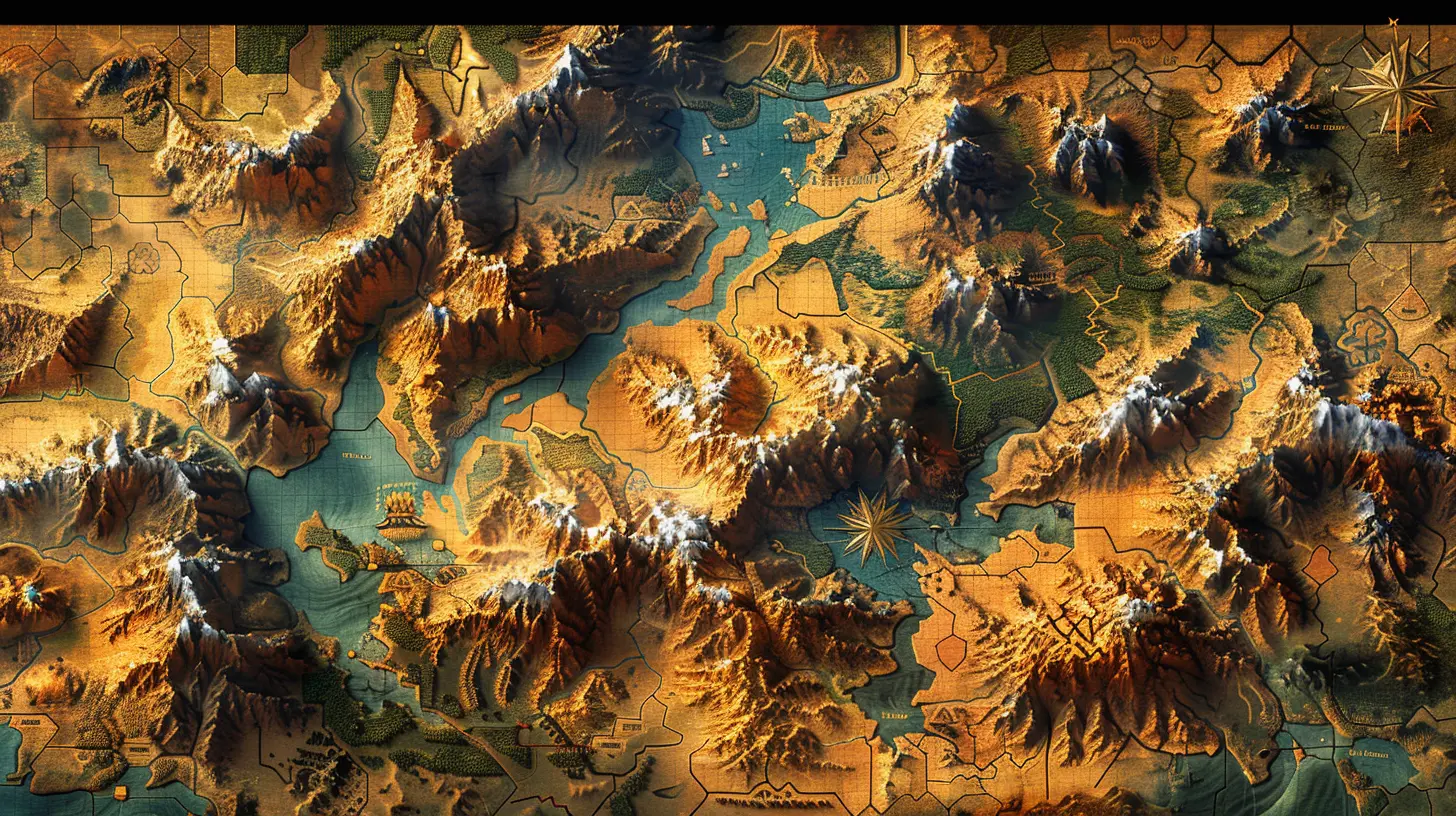
Step 2: Create A Narrative-Driven Layout
What’s the story your map is trying to tell? Every location, landmark, and region needs to have a purpose. Maybe the towering mountains in the north were once home to ancient gods, and the raging rivers that cut through the middle divide two warring kingdoms.A fantastic map isn’t just random geography slapped together—it’s a reflection of the game’s lore. Players should feel like the world existed long before they stepped into it. A narrative-driven map breathes life into your world:
- Landmarks as storytelling tools: That abandoned castle? Maybe it was the site of a great war. That mysterious cave? Perhaps it hides a powerful artifact. Each location tells a story, even if players never get the full explanation. Intrigue keeps them exploring.
- Logical progression: Zones shouldn’t feel disconnected. If the desert is suddenly next to an icy tundra with no explanation, it can break immersion. The transitions from one area to the next need to make sense.
Step 3: Balance Between Freedom and Structure
Open-world games have spoiled us with sprawling maps, but here’s a secret: most players don’t actually want 100% freedom. Yep, I said it. Too much freedom can feel overwhelming. The trick is to strike the perfect balance between player agency and structural guidance.How to achieve this balance:
- Breadcrumb trails: Use subtle cues like winding roads, NPCs, or environmental storytelling to push players toward important locations. But let them feel like they discovered it themselves—like finding a shortcut through a meadow instead of following the marked road.- Zones with varying difficulty: Start players off in safe, manageable areas and gradually lead them toward more dangerous regions. This sense of progression helps players feel like they’re growing stronger alongside the game.
- Hidden secrets: Sure, the main quest is great, but what about that cave tucked behind a waterfall? Or the treasure chest buried at the edge of the map? Sprinkle secrets everywhere! It rewards curiosity.
Step 4: Focus on Visual Clarity
A poorly designed map can confuse players faster than you can say, “Wait, where am I?” A good map should be visually appealing but, more importantly, functional. This goes for both the in-game physical world and the actual map players pull up on their HUD.Tips for functional map design:
- Landmarking is key: Always include distinctive landmarks—mountains, towers, lakes, or even a giant glowing tree. These should help players orient themselves without constantly opening their map.- Color coding: Forests are green, deserts are yellow, snowfields are white—you get the idea. Using distinct color palettes for each region helps players mentally map out the world.
- Simplify where necessary: Players shouldn’t feel like they need a Ph.D. to decipher your map. Keep things simple and highlight points of interest. If your map is overloaded with icons, you’re doing too much.
Step 5: Reward Exploration
Let’s be honest. Nobody wants to wander aimlessly only to find… nothing. It’s like opening a present and discovering there’s nothing inside. So what’s the solution? Rewards, baby!Players need to feel like every detour, every secret path, and every risky jump is worth the effort. Here’s how you can make exploration rewarding:
- Unique encounters: Think about mini-bosses, friendly NPCs, or quirky easter eggs that players can stumble across.
- Loot and treasure: Hidden loot is the oldest trick in the book, but it works. New weapons, armor, or even just gold can make even short detours feel satisfying.
- Environmental lore: Sometimes the best reward is storytelling. A crumbling ruin or a forgotten diary can add depth to the game world and make players feel connected to the story.
Step 6: Play with Verticality
Why design maps that are just flat and boring when you can add layers to the mix? Verticality is a game-changer. Think cliffs, caves, towers, and floating islands. Getting players to think about "up" and "down" as much as "left" and "right" adds a whole new dimension to gameplay.Here’s why it works:
- Encourages clever traversal: Players love using grappling hooks, climbing tools, or parkour mechanics to reach new heights.
- Unique perspectives: Looking down from a towering peak gives players a sense of scale and helps them appreciate the world you’ve built.
- Layered secrets: Hide the good stuff above or below the main path. Maybe that narrow ledge leads to a rare weapon, or that underwater cavern holds a key to a hidden quest.
Step 7: Test, Iterate, Repeat
No one gets it right on the first try. That’s why playtesting is your best friend. Watch how players engage with the map. Are they getting lost? Are they skipping entire regions? Are they actually enjoying wandering around?Use this feedback to fine-tune your design. Maybe that forest is too dense, or that mountain path is unnecessarily frustrating. Whatever it is, tweak it until your map hits that sweet spot between challenge and enjoyment.
Common Pitfalls to Avoid
Even the most experienced designers make mistakes. Here are a few traps to avoid when designing your world map:- Overcrowding: Too many points of interest crammed close together can make exploration feel meaningless.
- Empty spaces: On the flip side, don’t leave vast areas with nothing to do. There’s a difference between "mystery" and "boredom."
- Confusing navigation: If players constantly have to check their map or get lost, that’s a problem. Make natural paths and landmarks do the heavy lifting.
Conclusion: Building Maps That Players Will Love
Designing a world map is part creativity, part strategy, and part understanding what makes players tick. It’s not just about creating a big, beautiful landscape—it’s about making sure that every inch of that world adds value to the gameplay experience. The best maps are the ones that seamlessly blend storytelling, exploration, and game mechanics into a cohesive whole. Remember, your map is more than just a backdrop—it’s a character in itself, one that can make or break the player’s journey.So go ahead, grab that digital pen (or mouse), and start sketching out the world of your dreams. Who knows? Your map might just be the next legendary gaming landscape.
all images in this post were generated using AI tools
Category:
World BuildingAuthor:

Emery Larsen
Discussion
rate this article
5 comments
Sloane Robinson
Great insights on world map design! I appreciate how you emphasize the balance between exploration and gameplay enhancement. Very inspiring!
May 12, 2025 at 4:07 PM

Emery Larsen
Thank you! I'm glad you found the insights inspiring. Balancing exploration and gameplay is crucial for an engaging experience!
Clarissa McGowan
Great insights! A well-designed map truly elevates gameplay.
May 5, 2025 at 3:02 PM

Emery Larsen
Thank you! I'm glad you found the insights valuable. A well-crafted map can really transform the gaming experience!
Wilder Jackson
Effective world maps balance exploration and narrative to enhance engagement.
April 28, 2025 at 4:15 PM

Emery Larsen
Thank you! I agree that balancing exploration and narrative is crucial for creating an engaging world map that enriches gameplay.
Matilda Roberts
Great insights! A well-crafted world map can truly elevate the gaming experience. It’s like the canvas for adventure—here’s to designing maps that spark exploration and creativity for all players!
April 27, 2025 at 2:54 PM

Emery Larsen
Thank you! I completely agree—an engaging world map is essential for inspiring exploration and creativity in gaming. Excited to see where the journey takes us!
Lacey Gutierrez
Crafting maps is like seasoning in cooking—too little, and it's bland; too much, and it's chaotic!
April 24, 2025 at 2:35 AM

Emery Larsen
Absolutely! Striking the right balance in map design is crucial for an engaging gameplay experience.
